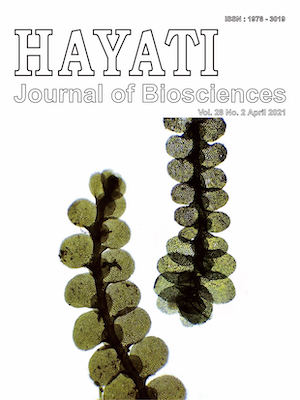Tempe and Soybean var. Grobogan-Indonesia Increased The Number of Osteoblasts and Osteocytes, Inhibited Osteoclast Damage in The Tibia Bone of Rats
Abstract
Tempe, an Indonesian traditional food, is a product of processed soybeans by fermentation. Both tempe and soybeans contain a variety of nutrients, such as isoflavone, Ca, P, and Mg that are important for bone health. This study aimed to observe the influence of Indonesian var. Grobogan tempe flour and soybean flour on the profile of osteoblasts, osteocytes, and osteoclasts in the tibia bone of rats. The rats were divided into five groups; casein, tempe flour 10%, tempe flour 20%, boiled soybean flour 10%, and boiled soybean flour 20% groups. The treatment was conducted for 90 days. The results showed that the treatment using tempe flour and soybean flour increased the number of osteoblasts and osteocytes significantly compared to the casein group. Tempe flour 20% showed the best result. In addition, the number of osteoclasts in the tibia bone of rats that were treated with tempe flour and soybean flour were smaller than that of negative control group. The treatment using soybean flour (10% and 20%) or tempe flour (10% and 20%) decreased the number of osteoclasts in the tibia bone of rats. It is suggested that both tempe and soybeans can be utilized for osteoporosis prevention.
Downloads
HAYATI J Biosci is an open access journal and the article's license is CC-BY-NC. This license lets others distribute, remix, tweak, and build upon author's work, as long as they credit the original creation. Authors retain copyright and grant the journal/publisher non exclusive publishing rights with the work simultaneously licensed under a https://creativecommons.org/

























.png) IPB University
IPB University Department of Biology
Department of Biology The Indonesian Biological Society
The Indonesian Biological Society 

